Six
OPERA HOUSES
AND THEATERS
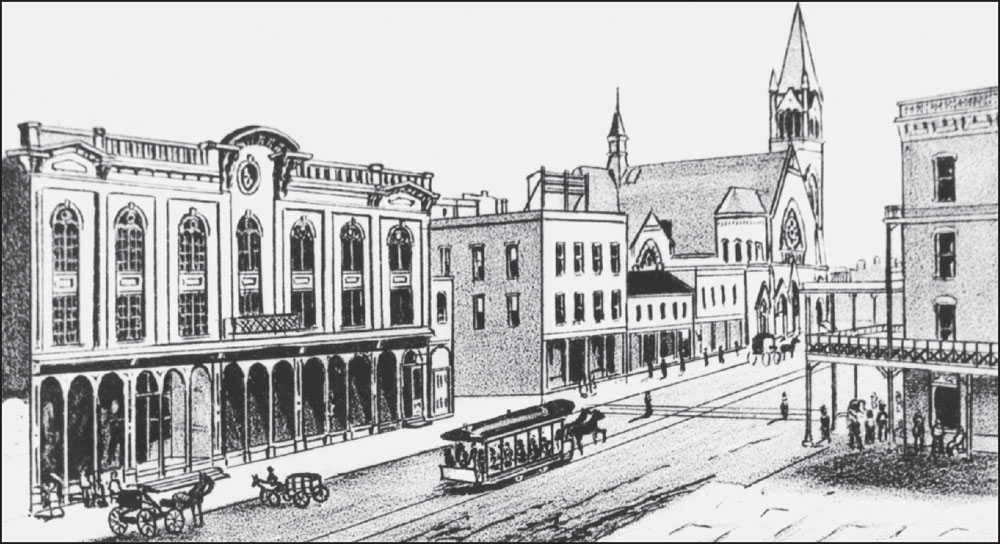
In February 1867, Louis Schaefer announced plans to build an opera house across the street from the courthouse in Canton. At the time, Comstock’s, located in Columbus, was the only opera house in the state. The town was divided about this proposed addition to their community. The English-speaking churches were very much against it, while the German-speaking churchgoers, Catholics, and nonchurchgoers were in favor of it. Plans moved forward, and 150 couples attended the opera house’s grand inaugural ball in February 1868.
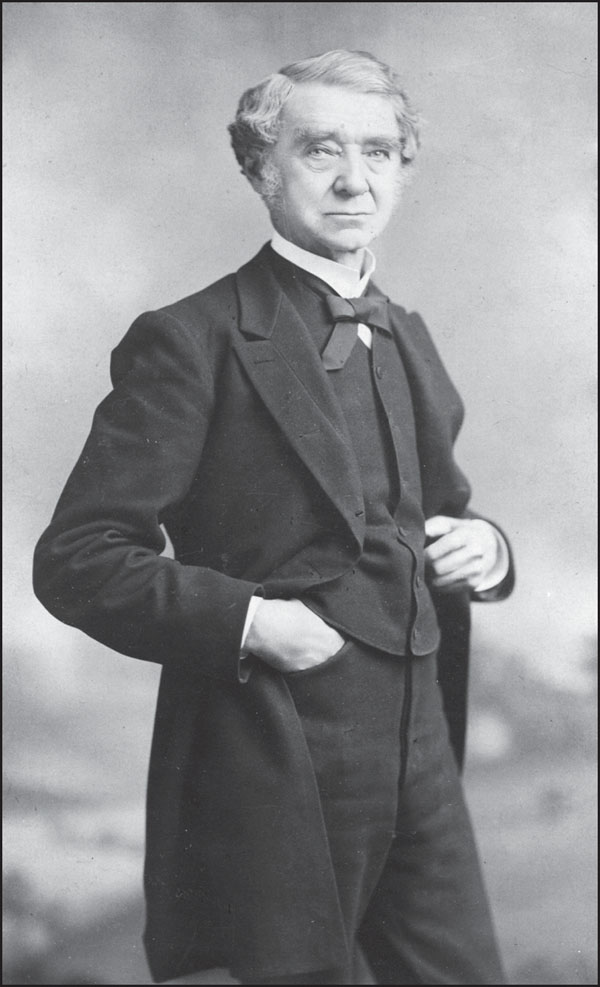
Schaefer was quite a character. Before every performance in his opera house, he spoke for up to an hour on any subject that struck his fancy. He once lamented about the high tariff on raisins. He particularly enjoyed providing the audience with a scathing-yet-witty characterization of his political enemies. When attendance was particularly low, he spent most of his curtain speech criticizing the people of Canton for their lack of appreciation for the show he had diligently arranged for them.
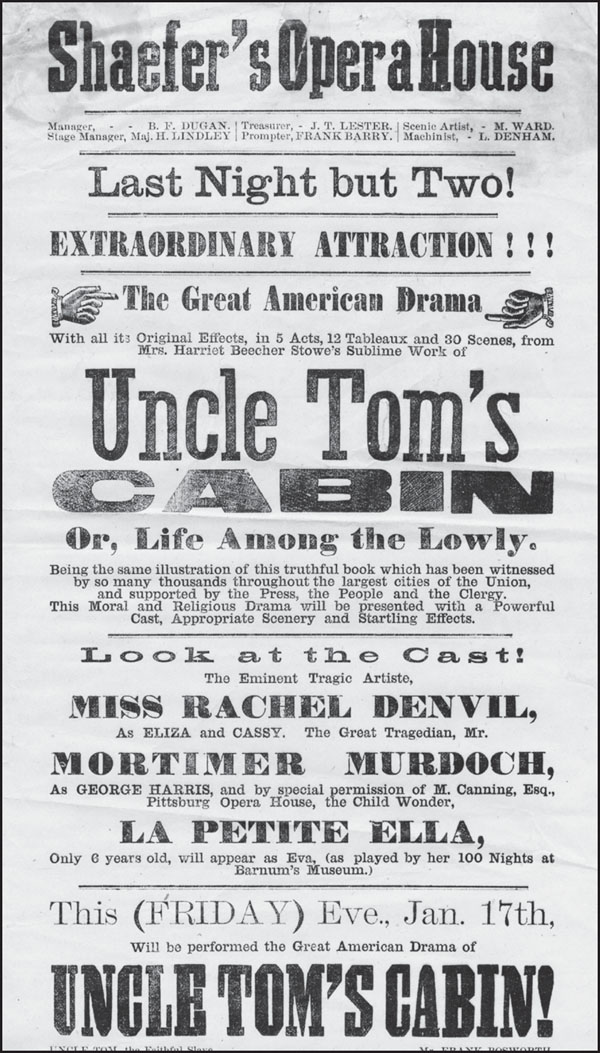
Schaefer’s Opera House hosted some “high class events,” including Hamlet, The Merchant of Venice, and Uncle Tom’s Cabin (Schaefer’s name is misspelled on this handbill). It also featured some more popular shows, like The Streets of New York and Rip Van Winkle. Tickets sold for 25–50¢ apiece. Schaefer had many ties with the entertainment business, which brought many well-known actors of the period to Canton that would pass over other towns of similar size.
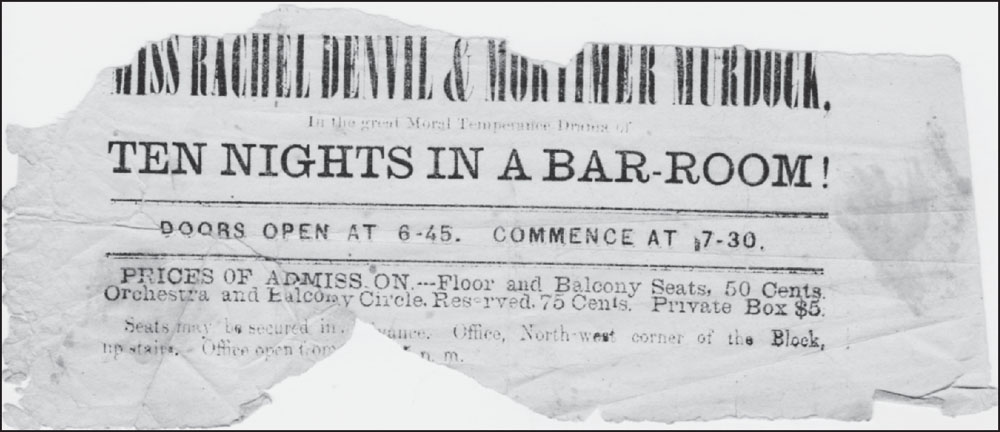
Schaefer booked many controversial lectures and performances, including the antialcohol morality drama Ten Nights in a Bar-Room and a debate on “The Impracticality, Absurdity, and Bigotry of the Second Amendment.” He was well known for being an atheist and was fond of scheduling popular shows in the same time slot as religious services.
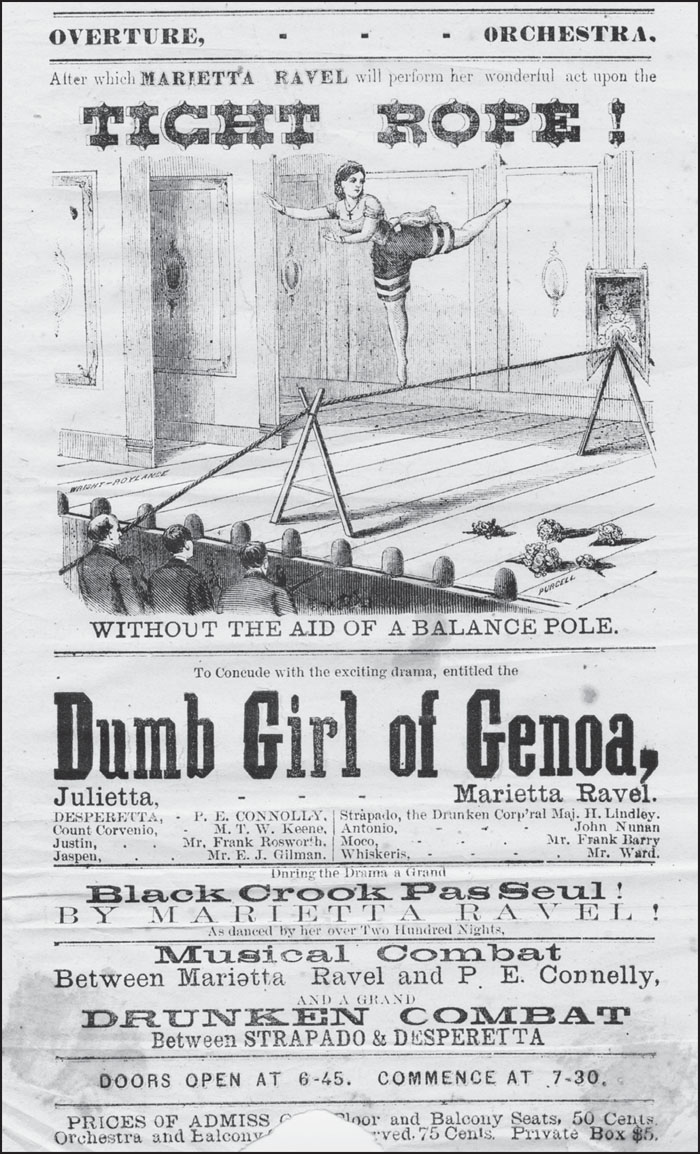
Marietta Ravel, a famous dancer, mime, and tightrope walker, performed at Schaefer’s Opera House in several numbers in a single evening. Schaefer was a fixture at his opera house until his death in 1889. Once the larger and more modern Grand Opera House opened in 1890, Schaefer’s Opera House became obsolete. The building was converted to an office building and burned down in 1951.
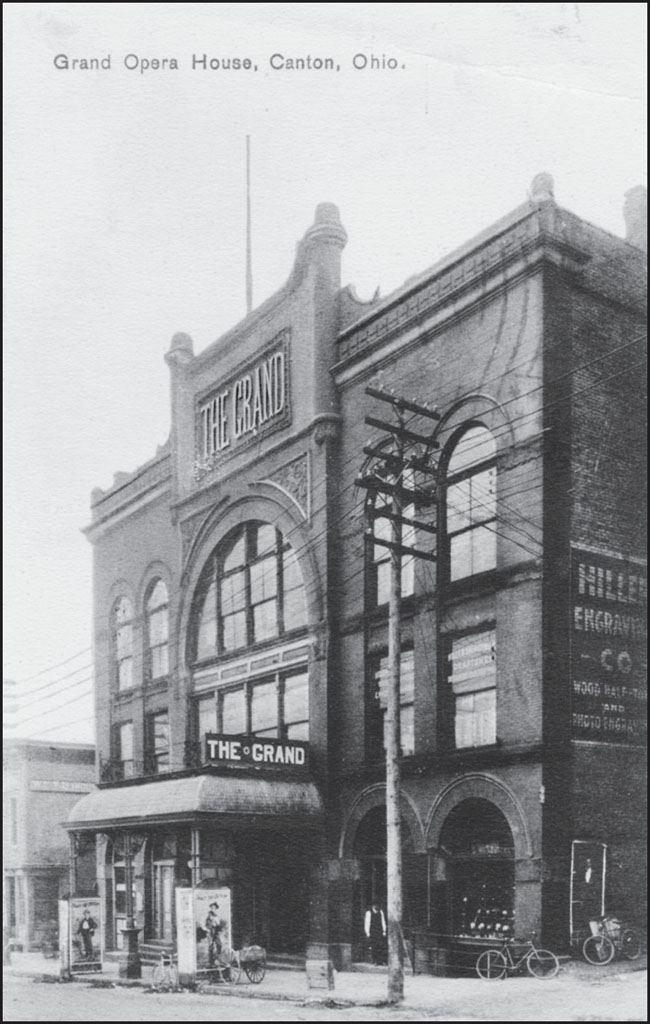
Located at 130 Third Street SE, behind the McKinley Hotel, the Grand Opera House opened in October 1890 with a stage that was said to be the largest in Ohio. Stockholders included such notable Cantonians as William McKinley and his brother-in-law George D. Saxton.
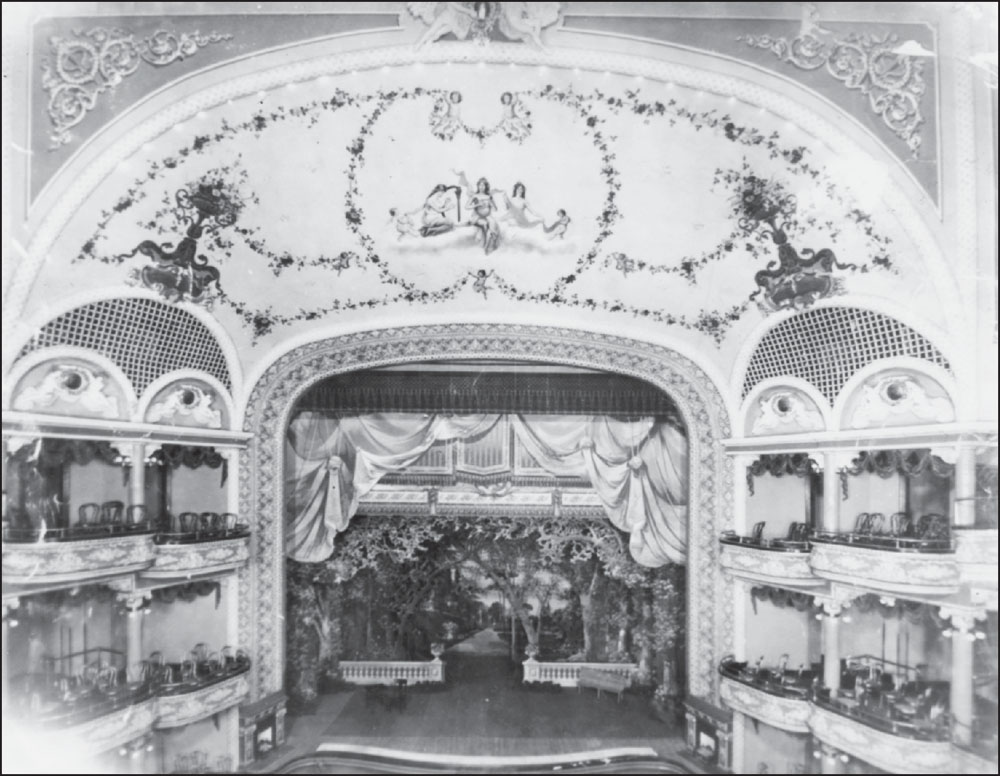
At the Grand Opera House, the scenery was raised up instead of sliding on and off stage, and the curtain was a representation of Lake Como in Switzerland. Nearly every surface was finished in gold and bronze, with polished brass railings and plush seats. The first performance was the comic opera Fauvette by the Boston Ideal Opera Company. One of the most elaborate events held at the Grand Opera House was the McKinley birthday celebration on January 27, 1903. More than 450 guests paid $15 a plate to attend the dinner sponsored by the Canton Republican League. Pres. Teddy Roosevelt was the keynote speaker.
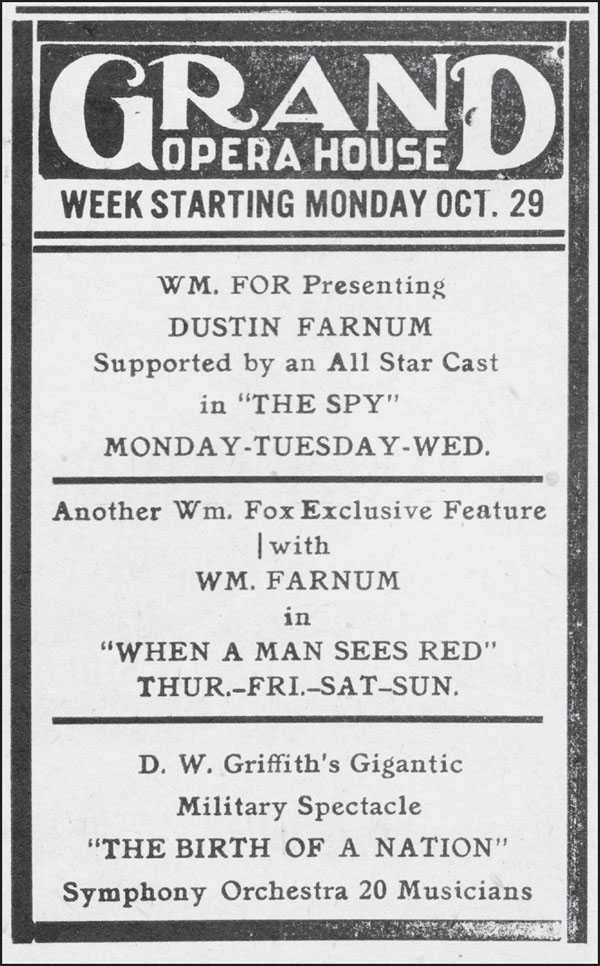
The Grand Opera House featured D.W. Griffith’s The Birth of a Nation in October 1918. The controversial silent film had debuted in 1915, but it was not immediately shown in Canton because it had been banned by Ohio’s governor. Based on the novel and play The Clansman, The Birth of a Nation was accompanied by a 20-piece orchestra, a popular method for adding sound during the silent-film era.
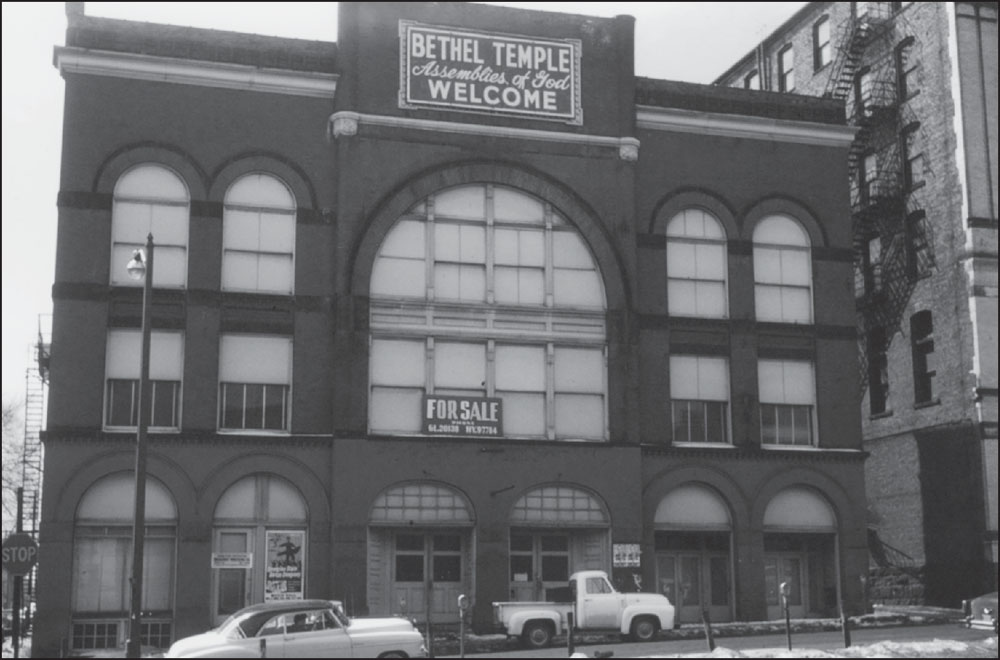
As attendance at live shows began to decline, the Grand became a movie theater in 1927. Toward the end, the Grand showed programs that were “mostly on the seamy side,” according to the Repository. The theater closed in 1945, and the Bethel Temple purchased the building the following year. The Grand was used as a church until 1958, when the Bethel Temple congregation finished construction of a new building on Twenty-fifth Street NW. It was torn down in 1959.
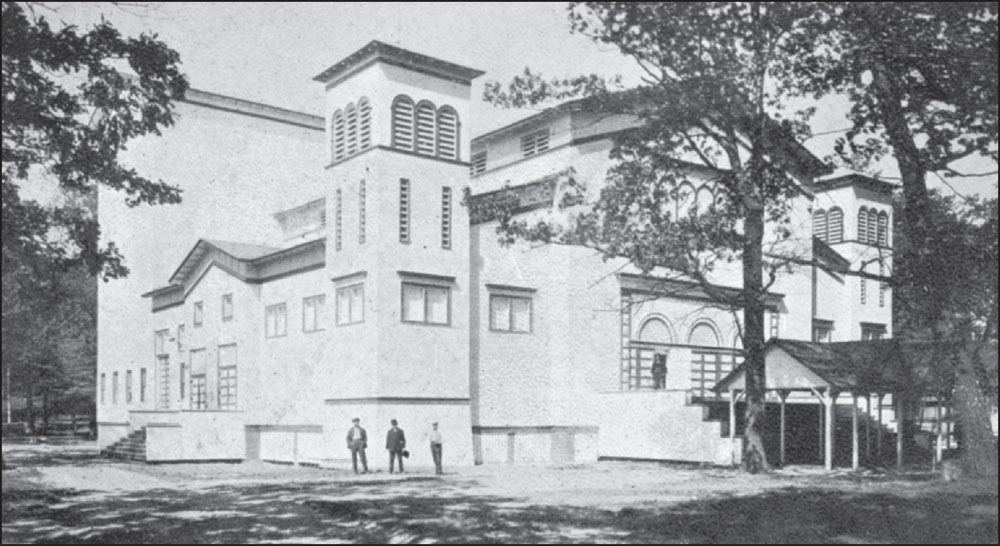
The Northern Ohio Traction & Light Company opened the Park Theatre at Meyers Lake in May 1906 with an impressive array of live performances, including jugglers, magicians, comedians, and a pantomime act. Famous vaudeville stars Dorothy Vaughn; the Marx Brothers; and Joe, Myra and Buster Keaton all performed at the 1,200-seat theater.
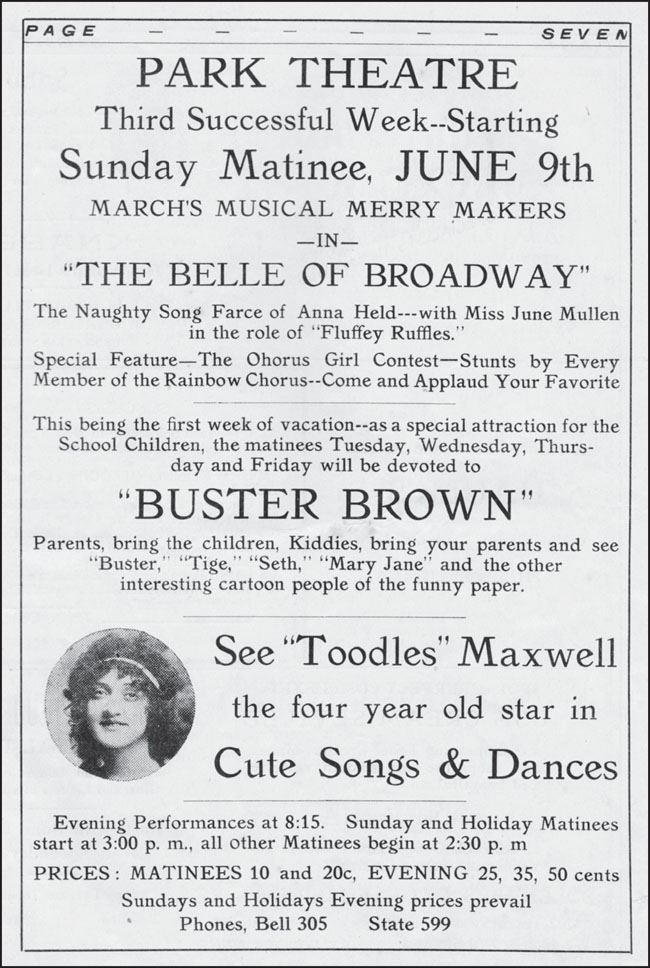
This 1918 advertisement for the Park Theatre featured March’s Musical Merry Makers, a popular act on the vaudeville circuit. A matinee of Buster Brown provided a family-friendly show for the kids. The Park Theatre was exclusively devoted to live entertainment, but throughout the 1920s, vaudeville began to decline. The Park Theatre closed in August 1926 with a final show called Pretty Baby, starring Mary Farrel and Jimmy Hodges.
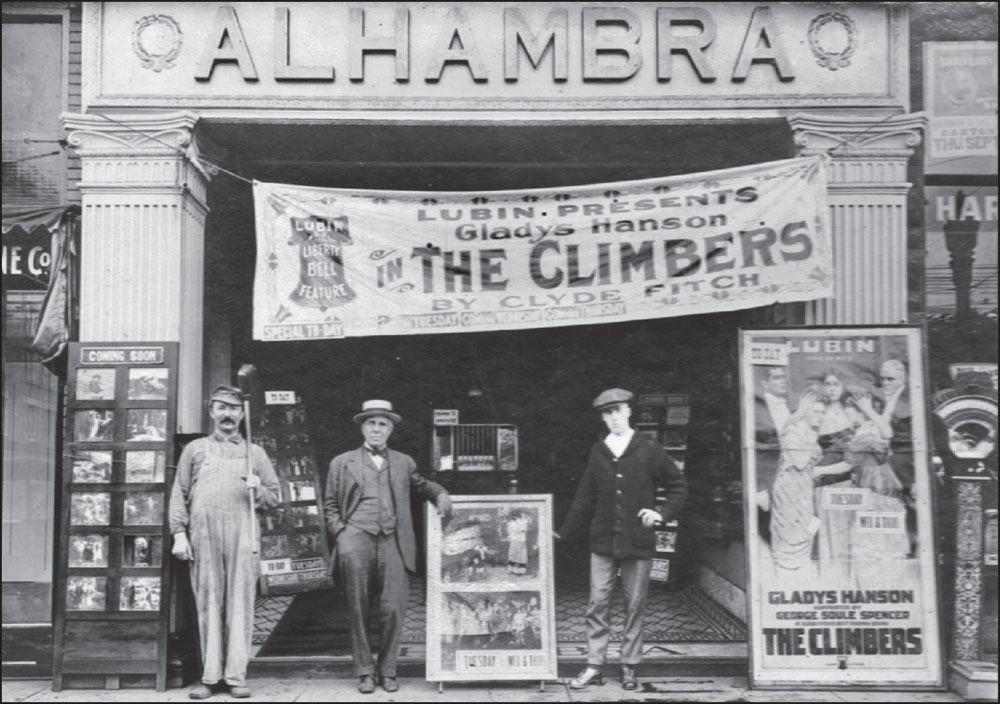
When the Alhambra opened in 1913 at 332 North Market Avenue, it became the first theater in Canton built specifically for motion pictures. Other theaters in town played movies, but they also offered a variety of live stage shows. The Alhambra celebrated its first Christmas by giving a present to each woman that came into the theater every weekday afternoon. A special pitch urged the ladies to come in for a rest when they were tired of Christmas shopping. This photograph of the theater was taken in September 1915 when the movie The Climbers, starring Gladys Hanson and Walter Hitchcock, was playing.
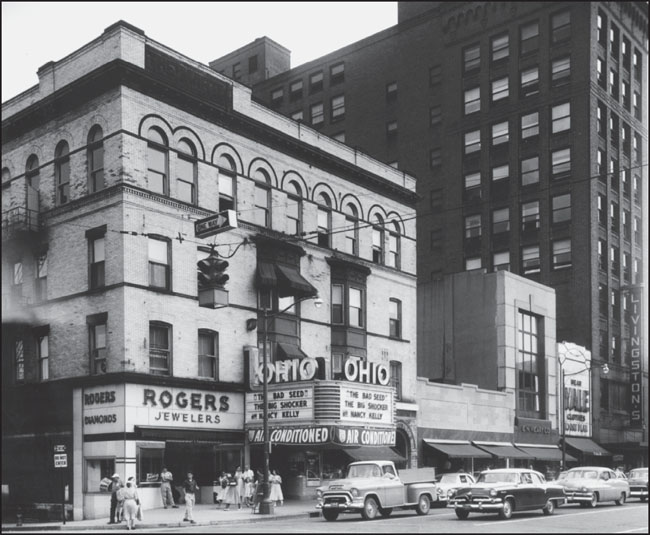
The Alhambra was renamed the Ohio Theatre in the 1930s. In this photograph, taken in 1956, the “Air Conditioned” sign promises welcome relief from hot summer weather. Reinco Theaters took over the space in 1965 and continued to show first-run films. The company remodeled the building after a severe fire in 1969, but it closed in 1976.
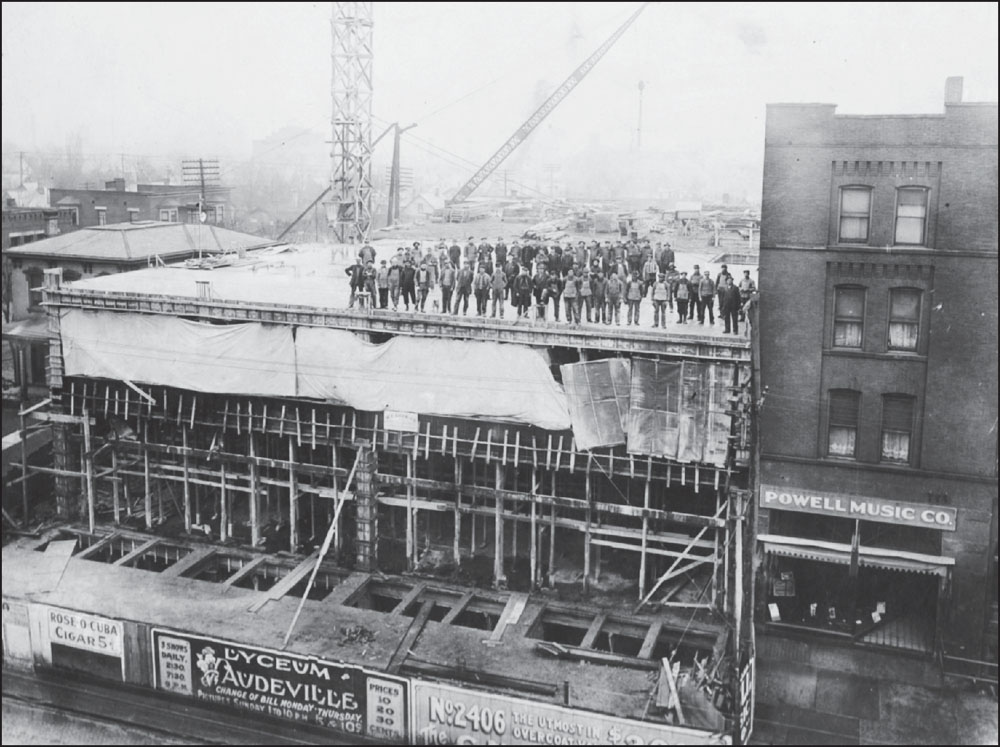
The Majestic Theatre was torn down in 1912 to make way for the 1,200-seat Lyceum at 406 East Tuscarawas Street. This rare photograph shows the construction crew of the W.C. Owen Company in Cleveland on the roof, as well as a sign advertising three vaudeville shows daily at 2:30, 7:30, and 9:00 for 10¢, 20¢, or 30¢. The sign also announced pictures on Sunday from 1:00 to 10:00 p.m. In the early days of motion pictures, short films would have featured anything with movement, such as Niagara Falls or storm clouds gathering.
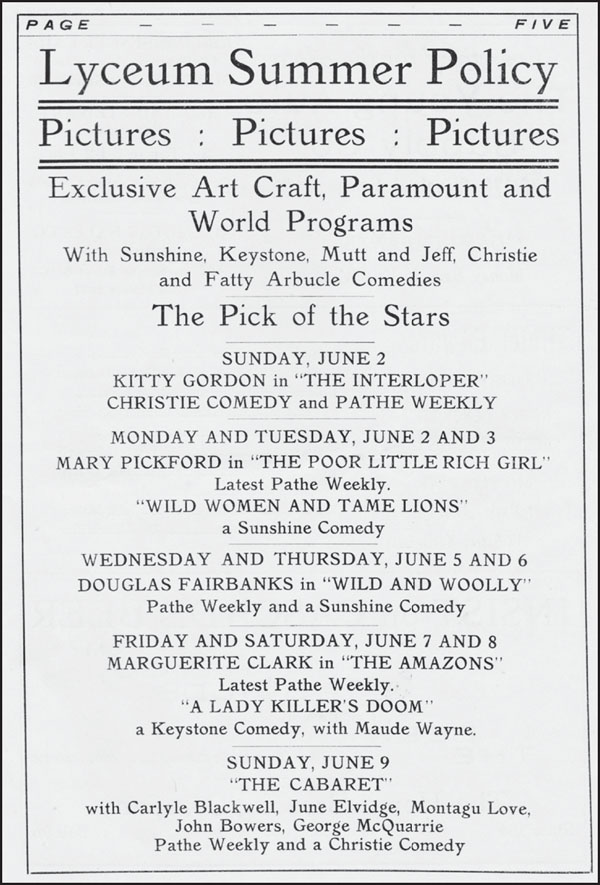
This 1918 advertisement for the Lyceum shows how often early movie theaters changed their showings. In a single week, Cantonians could view films featuring silent-movie superstars like Mutt and Jeff, Fatty Arbuckle, and Douglas Fairbanks in just one downtown theater. The Poor Little Rich Girl, starring Mary Pickford, became a Library of Congress choice for preservation in the National Film Registry in 1991.
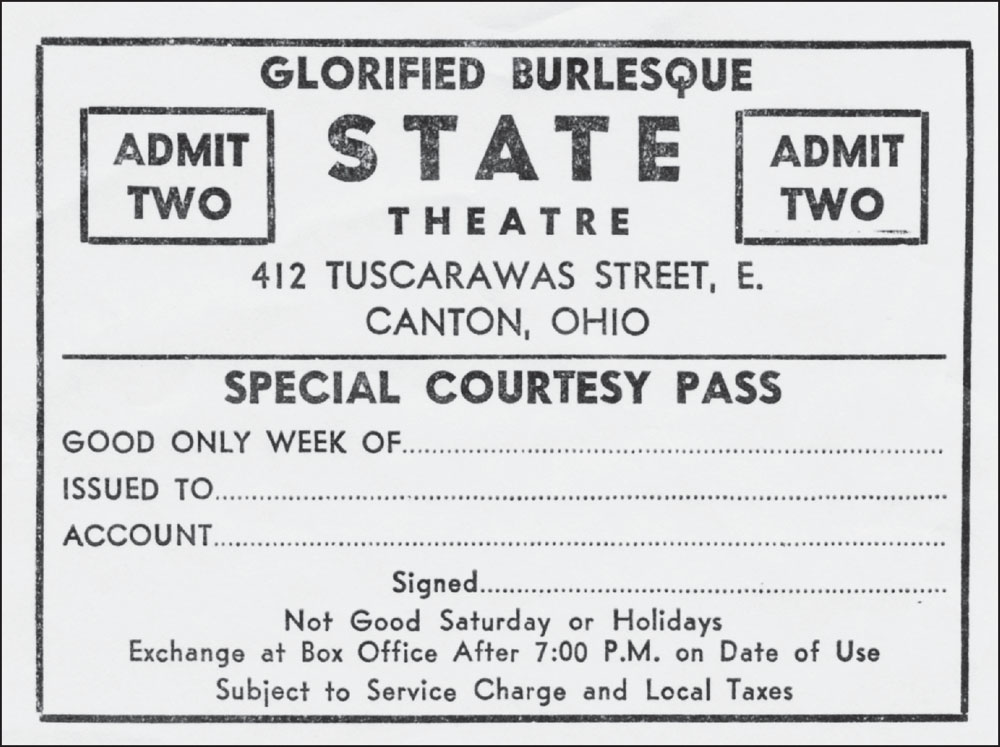
The Lyceum Theatre later became the State Burlesque. Photographs of the State are extremely rare, but this “special courtesy pass” for two survives. Billed as the “Home of Burlesque’s Top Exotic Stars,” the State featured performers like Busty Russell and Chesty Morgan. It closed around 1981. (Courtesy of the Canton Classic Car Museum.)
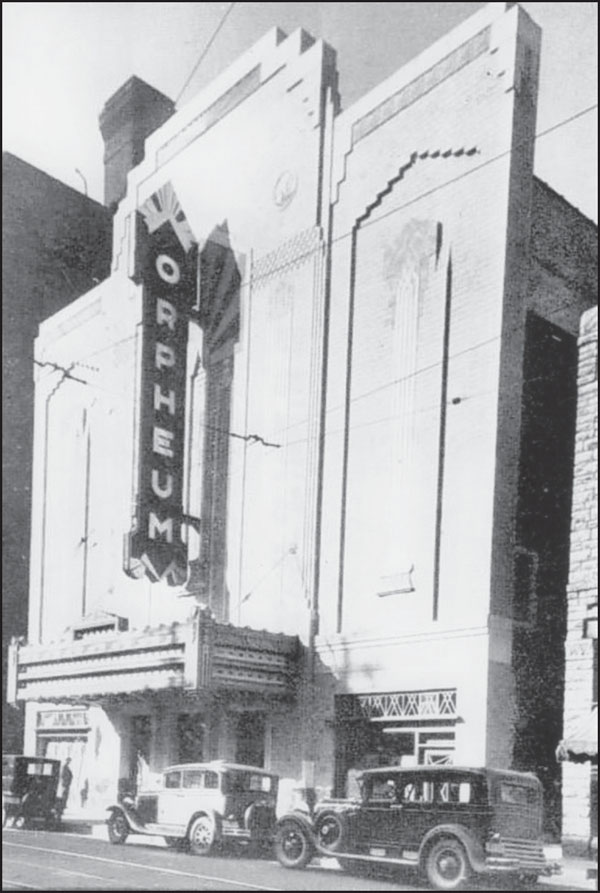
Built by architect J. Matthew Bostich in 1907, the Orpheum was located at 205 East Tuscarawas Street, where Stark Dry Goods Company and then O’Neil’s later stood. The theater featured the finest live Vaudeville acts, including jugglers, magicians, and comedy sketches, as well as silent movies. A representative from Warner Bros. visited the Orpheum in 1923 to conduct an experiment. According to historian E.T. Heald, “Several local citizens were coached to talk in synchronization with pictures that were thrown on the screen. The results were ludicrous.” The Orpheum operated until 1930.
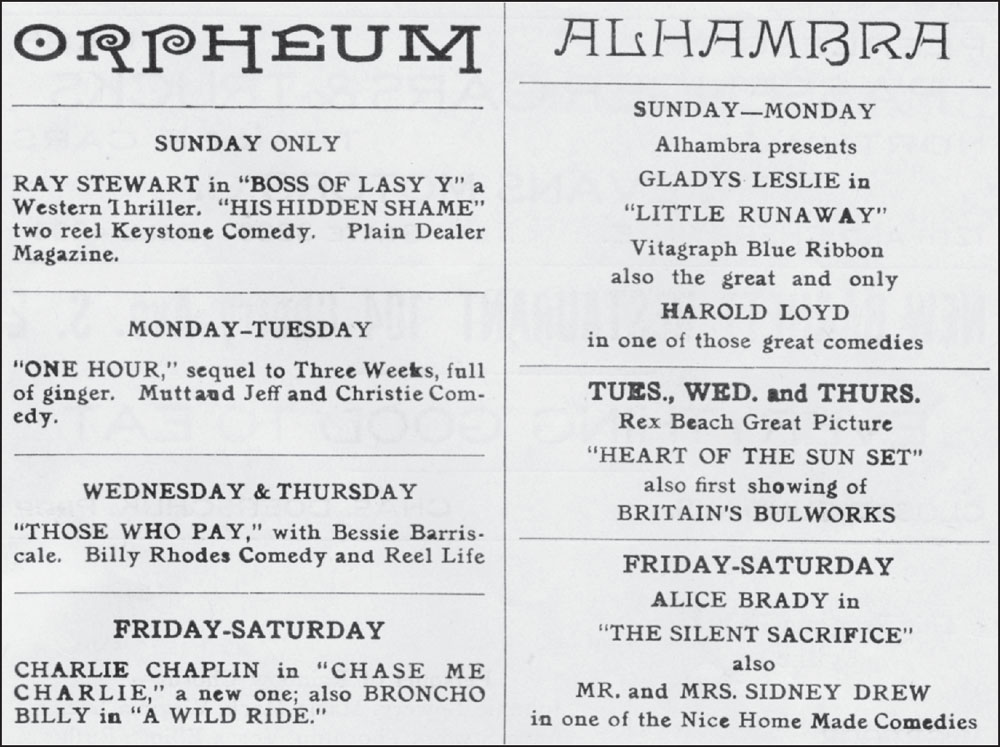
This advertisement for the Orpheum and the Alhambra shows a cross section of the kinds of films people could see in the theater in 1918. The Orpheum was running Chase Me Charlie, a compilation of short films starring Charlie Chaplin, including The Tramp, Shanghaied, A Night Out, and His New Job.
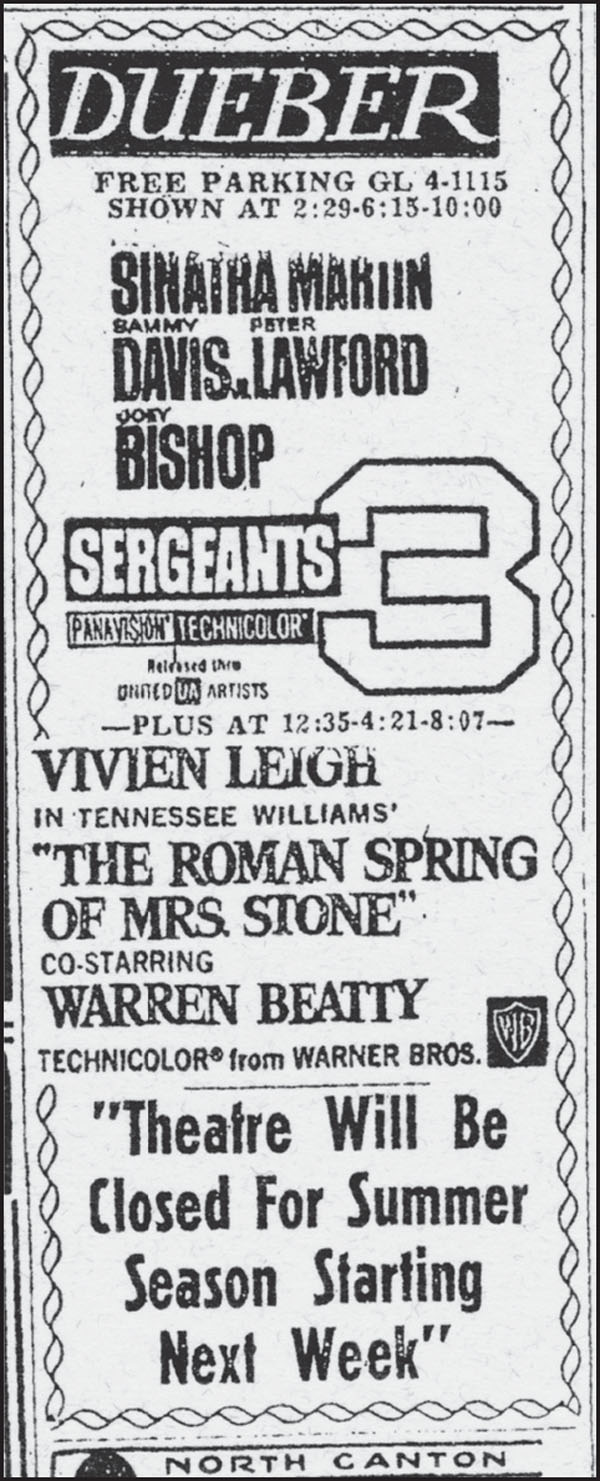
The Dueber Theatre was located at 112 Dueber Avenue SW, on the site where McDonald’s now stands. It operated from 1942 to 1963. This advertisement for The Roman Spring of Mrs. Stone, starring Warren Beatty and Vivien Leigh, and Sergeants 3, starring Rat Pack members Frank Sinatra, Dean Martin, Sammy Davis Jr., Peter Lawford, and Joey Bishop, is from 1962. (Courtesy of Linda Todd.)
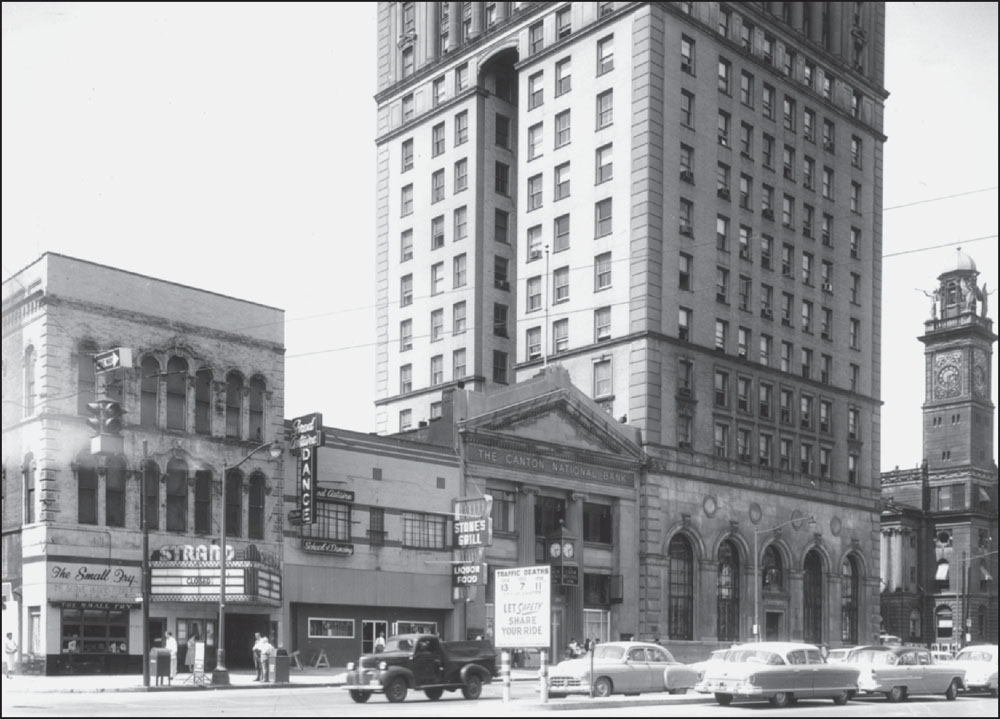
The Strand opened in 1917 and was the first theater in Canton to show a movie with sound. Sound for many of the early talkies was provided on a record to play along with the film, which was still silent. A simple sneeze in the projection booth could jostle the needle enough to throw the sound out of sync with the movie. Once sound was added to the film itself, mishaps like this were a thing of the past. The Strand was located at 139 South Market Avenue, across from the Valentine Theatre. This photograph was taken in 1956.
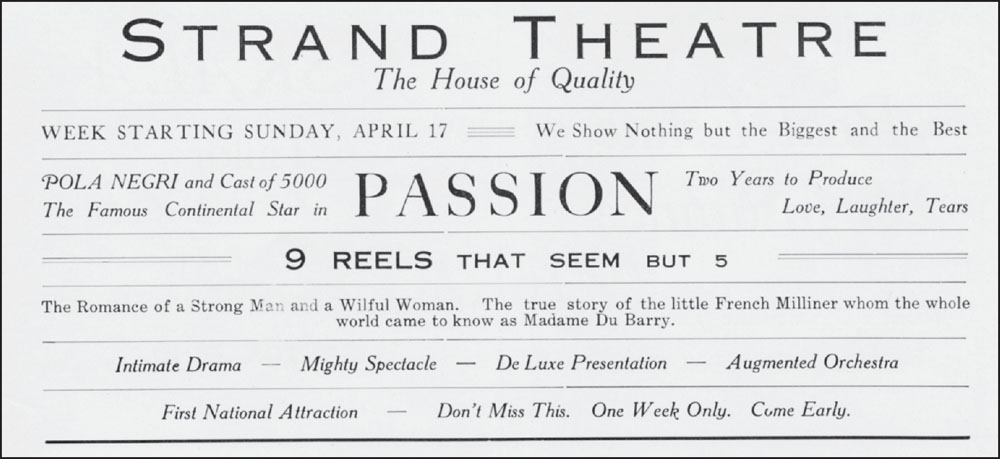
This 1921 advertisement for the Strand is publicizing the film Passion, “9 reels that seem but 5,” featuring the “romance of a strong man and a willful woman.” Although ticket prices in the early days varied from 30¢ to 50¢, in the 1930s tickets for Grand Hotel starring Greta Garbo and John Barrymore cost a whopping $1.50. As noted in this advertisement, the Strand showed “nothing but the Biggest and the Best.”
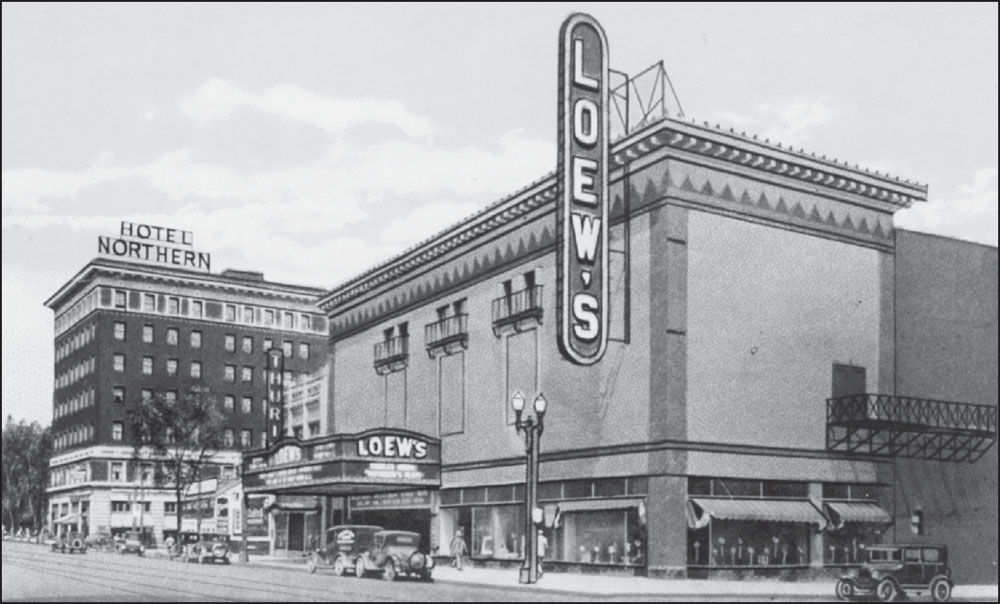
The nationwide Loew’s chain opened its Canton location on February 19, 1927, at 518 North Market Avenue. The first movie shown was the silent film The Waning Sex, starring Norma Shearer and Conrad Nagel. Loew’s also featured live Vaudeville shows. The first stage production included Peggy English, “The Bluest of the Blues Singers”; Art Landry and his Victor recording orchestra; and Ziegfeld Follies dancing star Rita Owin. With seating for more than 2,140, Loew’s was Canton’s largest movie theater.

The Glass Key, starring George Raft, Edward Arnold, and Claire Dodd, came to Loew’s for four days in 1935. Based on the hardboiled detective novel by Dashiell Hammett, the story was brought to the silver screen by Adolf Zukor, founder of Paramount Pictures. (Courtesy of Canton Classic Car Museum.)
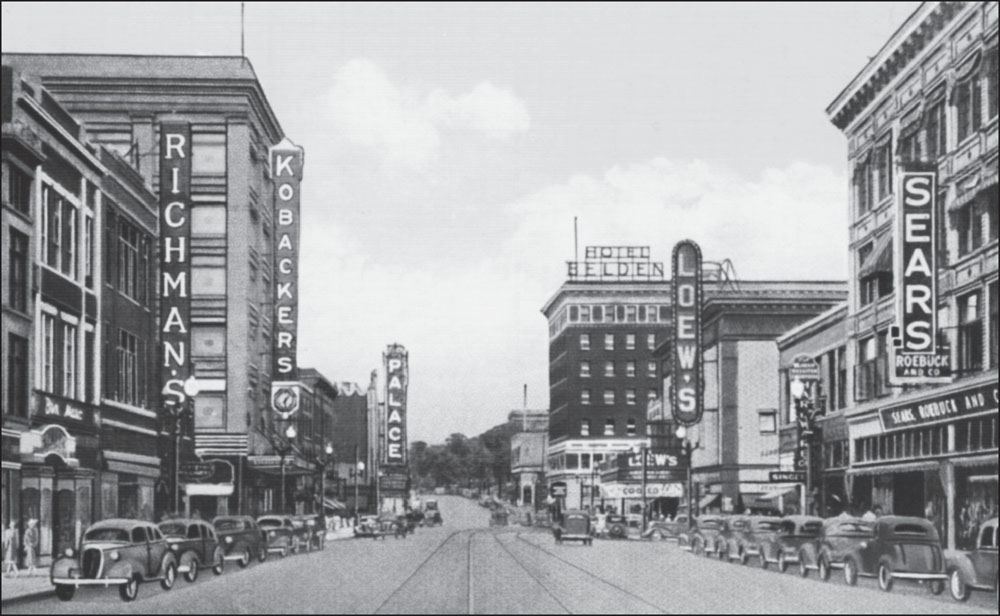
In 1953, Loew’s became the first theater in town to introduce three-dimensional, or 3-D, movies. According to an article in the Repository, each pair of glasses loaned to a movie patron was “sterilized between showings.” The article wrongfully predicted 3-D movies would become “the rule rather than the exception.” Those first 3-D movies were a series of short films, including a trip down the Thames River in England, a ballet called The Black Swan, and a British satire with special effects. The Ohio theater had the honor of showing Canton’s first full-length feature 3-D film, Bwana Devil. Loew’s closed in 1975 and was torn down in 1977.
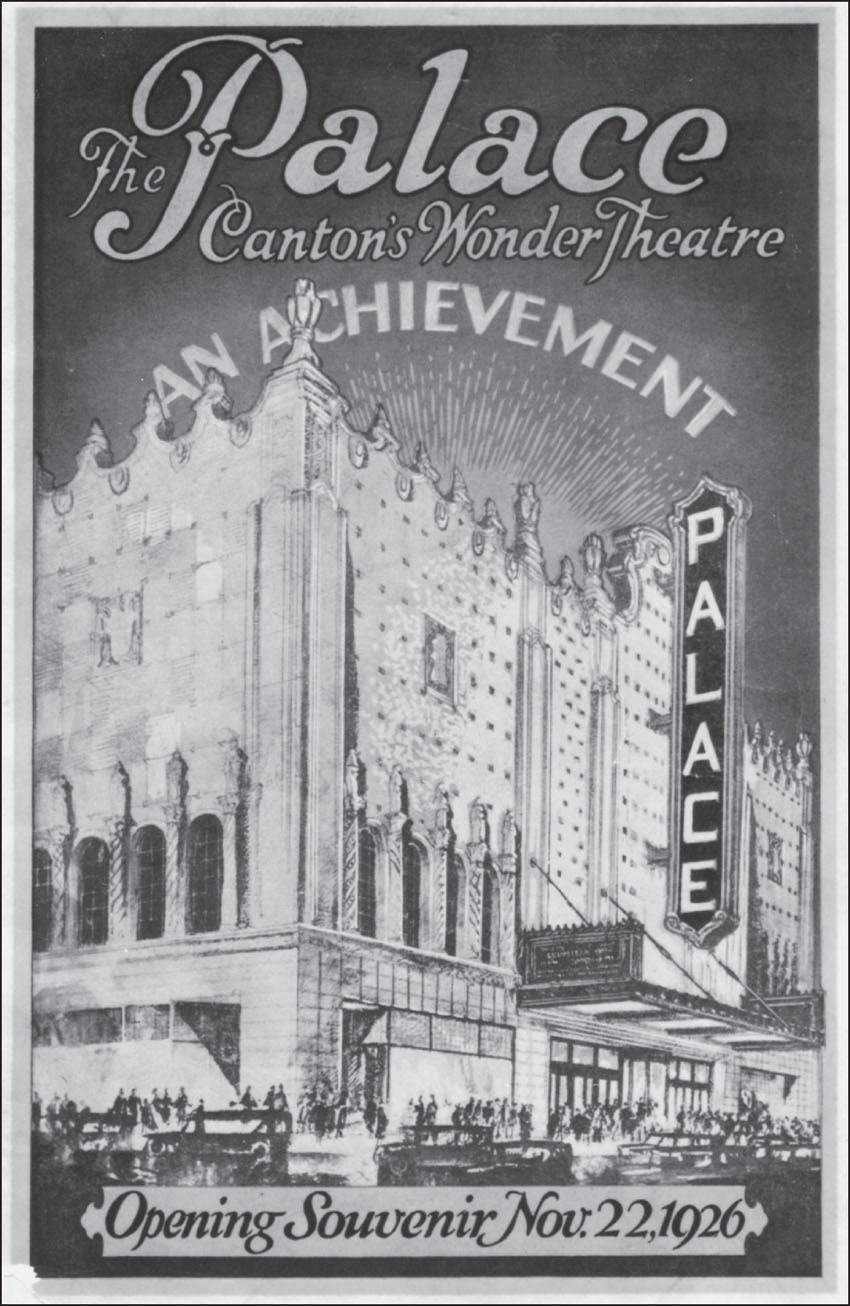
Architects created some of the most lavish and opulent structures of the 1920s when they built huge movie houses. Canton’s Palace Theatre opened on November 22, 1926. The starry night sky ceiling, Spanish styling, and soft lighting exemplified the best of atmospheric design. A state-of-the art hanging-stage system could hold 82 different sets at the same time. (Courtesy of the Palace.)
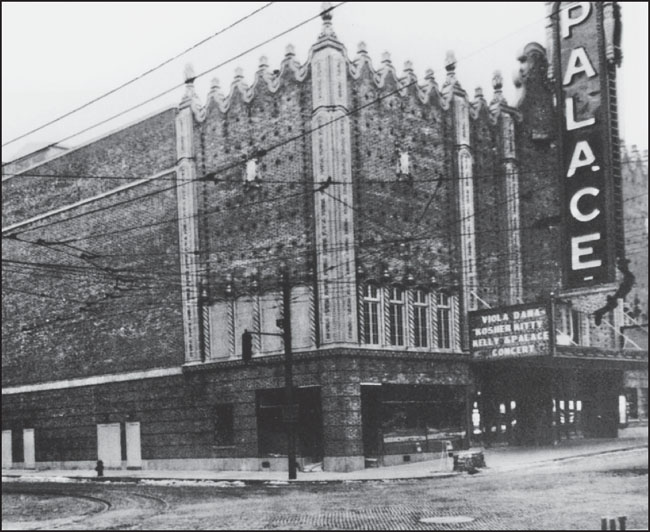
Although the Palace was one of many downtown theaters, it remained the only one with an atmospheric design. As many of its downtown neighbors closed their doors, the Palace shut down in 1976. One week before its scheduled demolition, the Canton Jaycees stepped forward to save the building. In 1980, Canton saw the return of the familiar Palace name in lights. Today, the Palace hosts 100,000 people a year at 300 events. (Courtesy of the Palace.)
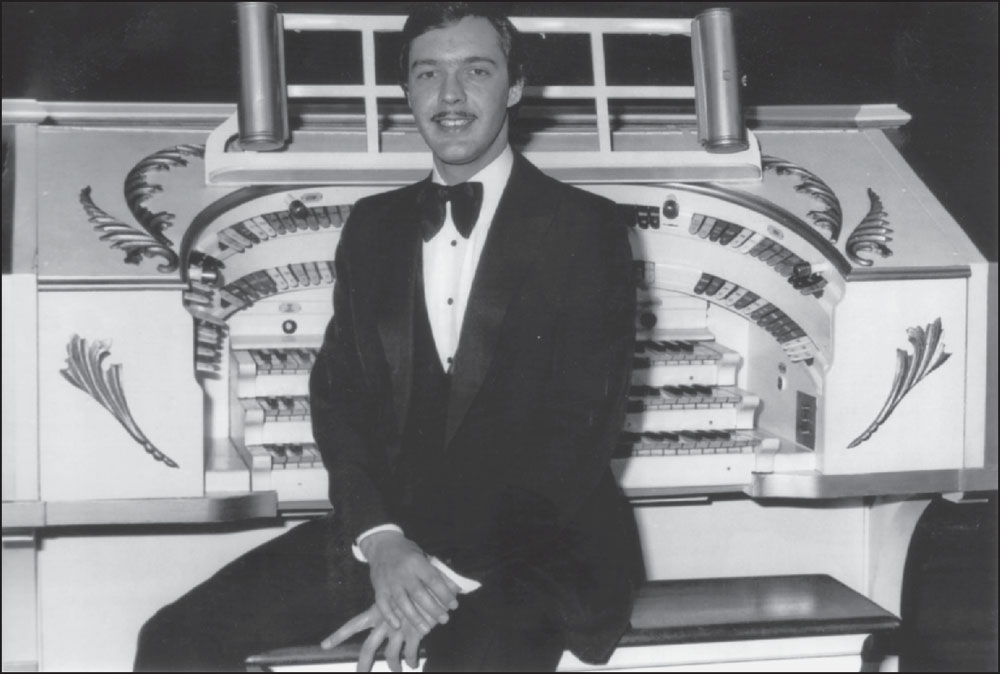
The Palace’s Kilgen organ is the only one in the country still in its original location. Theaters installed organs to provide accompaniment for silent movies. During the 1970s, a roof leak caused major water damage to the organ. Charles Kegg, Clark Wilson, Charles Blair, and Robert Beck (shown here) repaired the Kilgen so it was playable for the Palace’s reopening in 1980. The organ was fully restored in 1992. (Courtesy of the Palace.)
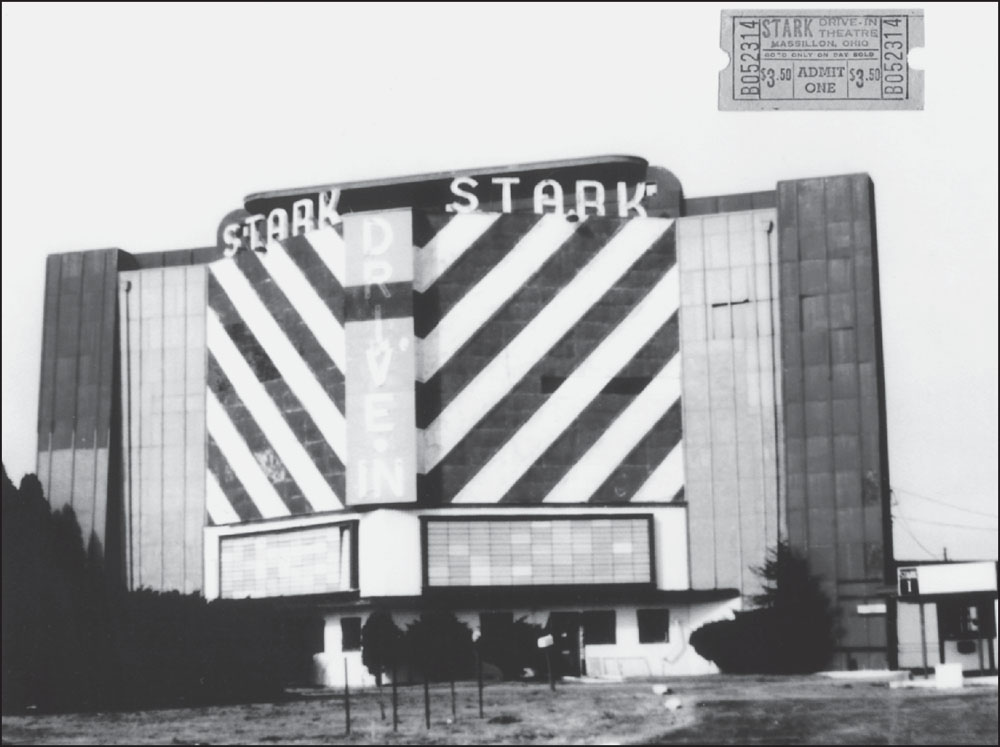
The Stark Drive-In was one of the first drive-in movie theaters in the Canton area, first appearing in the 1950 edition of the Massillon city directory. Although it was located slightly out of town at 2416 Lincoln Way East, Cantonians have fond memories of the novelty of watching a movie in one’s car. The North Canton Auto Theatre opened a few years earlier and first appeared in the city directory in 1948. (Above, courtesy of Gary Nist; left, courtesy of Linda Todd)





























